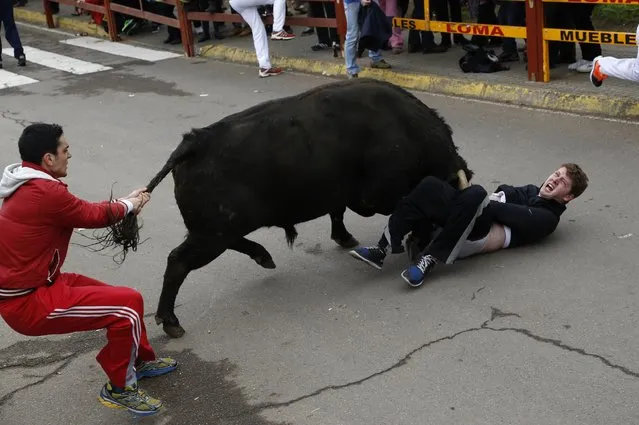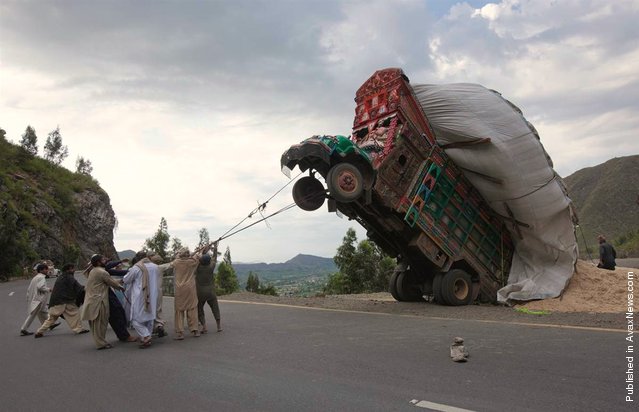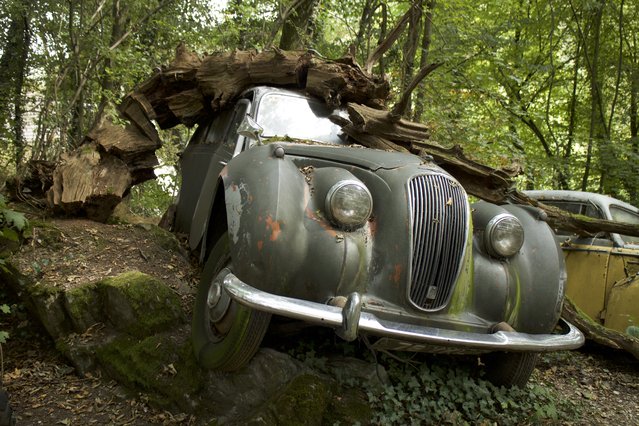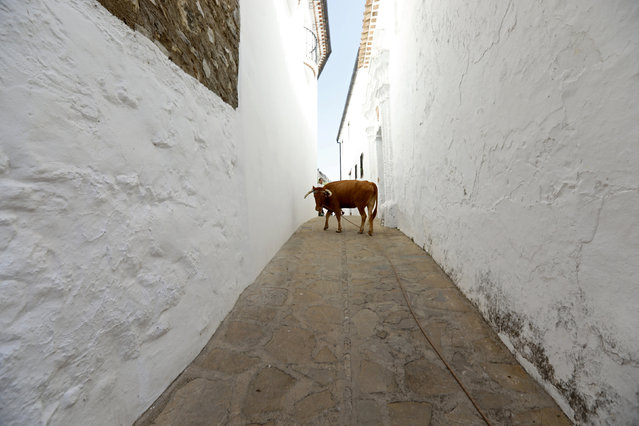
In this photo taken Saturday, February 14, 2015, Benjamin Miller, 20, from Georgia, in the US, is gored by a bull during the “Carnaval del Toro” in Ciudad Rodrigo, Spain. An American youth is recovering in the intensive-care unit of a hospital in western Salamanca after being savagely gored during a bullfighting festival celebrating Carnival, officials said Sunday. Surgeon Enrique Crespo said he was called to operate on 20-year-old Benjamin Miller from Georgia, who had been gored and tossed by a large fighting bull on Saturday, the first day of nearby Ciudad Rodrigo's “Carnaval del Toro”. (Photo by Jose Vicente/AP Photo)








